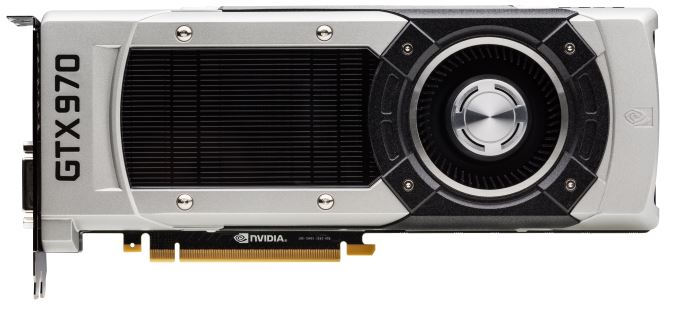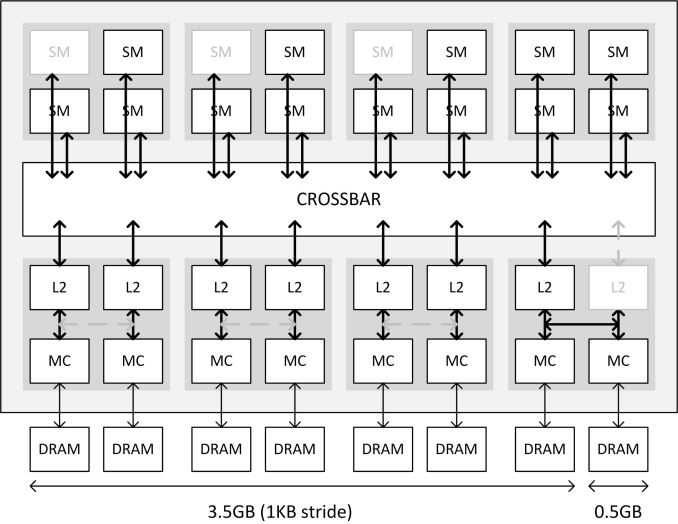Update: NVIDIA GeForce GTX 970 Settlement Claims Website Now Open
by Ryan Smith on September 12, 2016 9:30 AM EST
Update 09/12: Bringing this back up, over the weekend the website to submit settlement claims went up. Owners of GTX 970s who purchased the card between its launch and August 24th of this year can participate in the settlement in order to receive $30 per card. The settlement itself has not yet been approved by the courts, but is expected to be approved in December.
Interestingly, there is no damage cap in the settlement, so all participants will receive a fixed $30 per card regardless of the price paid or the number of claimants. Meanwhile the proposed attorney fees total $1.3 million.
Original: 07/29
Word comes from Top Class Actions (via The Tech Report) that NVIDIA will soon be settling a series of proposed class action lawsuits brought against the company regarding the GeForce GTX 970. Under the preliminary settlement, United States residents who purchased GeForce GTX 970 cards would be able to claim a $30 settlement in return for dropping further litigation against the company. With the GTX 970 having launched at $329, this amounts to a de facto 9% rebate on the card.
The class action suits in question were brought against the company almost immediately after NVIDIA made the important (and more than a bit painful) disclosure that the initially published specifications for the GTX 970 were wrong. Specifically, that the card had an unusual memory crossbar organization where one ROP/L2 partition was disabled, giving the card only 56 ROPs instead of 64. Furthermore, this meant that the last 512MB of the standard 4GB of VRAM could not be accessed in a contiguous manner, impacting how it could be used. To that end, as the Top Class Actions article notes, the $30 settlement “was calculated to represent a portion of the cost of the storage and performance capabilities the consumers thought they were obtaining in the purchase of the product.”
With that said, at this point the settlement itself has yet to be approved by the court, and signups are not yet available. Assuming it is approved, I’d expect that signups will be made available shortly thereafter.
Source: Top Class Actions (via The Tech Report)











105 Comments
View All Comments
Eidigean - Wednesday, August 3, 2016 - link
We've come full circle. Those with the 970 played that game, and received a product that was defective in other, undisclosed ways, and did notice. I personally don't want the hassle in my purchases.AnnonymousCoward - Wednesday, August 3, 2016 - link
"hassle"? The 970 has had probably THE BEST performance/price/power of any card on the market for almost 2 years! How is that a hassle? Who cares if it has 3.5GB; it could have 0.1GB for all I care.Btw you could increase your fps by 60% for almost free, by selling your 580 and getting a 770 on eBay.
Sheratan - Friday, July 29, 2016 - link
I rate this news 3.5/4Wolfpup - Friday, July 29, 2016 - link
So was this just someone at Nvidia filling in a spec sheet wrong?Nfarce - Friday, July 29, 2016 - link
That's what it looks like vs. an intentional mislead. It happens more often in industries than people would want to know, when tech report writers (spec sheet editors) get info from engineers and translate it into language we regular people can understand. Most of the time it's caught before the final spec documentation is released. I used to be a technical writer, so I've seen this first hand.Samus - Friday, July 29, 2016 - link
The morons in marketing just didn't understand the architecture.If you disable 1/8th of the ROPs, you lose 1/8th of the addressable memory. Any remaining memory ends up in another partition.
All they had to do was indicate the card ships with 4GB of PHYSICAL memory but only 3.5GB is addressable. PC manufactures, storage companies and even Microsoft have been careful to define addressable memory since 64-bit was widely adopted, or more specifically, the limitations of a 32-bit environment.
piiman - Saturday, July 30, 2016 - link
"All they had to do was indicate the card ships with 4GB of PHYSICAL memory but only 3.5GB is addressable."Except that isn't correct. Its all addressable but the last 512 has less bandwidth and has to share a bus, this its slower.
Samus - Sunday, July 31, 2016 - link
Originally, yes, but after a driver update last year nVidia effectively axed the last 512MB from ever being used.AnnonymousCoward - Tuesday, August 2, 2016 - link
So you're saying 4GB was shipped on every card, and it was 100% accessible? (nevermind read/write speeds) Then how is this even a lawsuit.tamalero - Thursday, August 4, 2016 - link
because you cant access it anymore? perhaps the last 512MB were unstable?